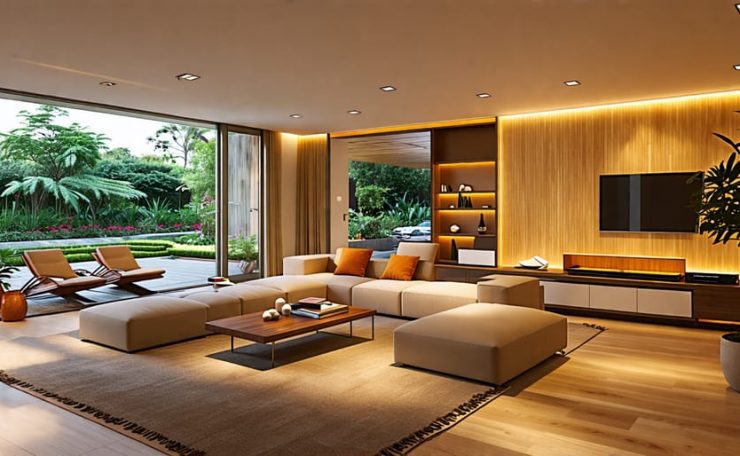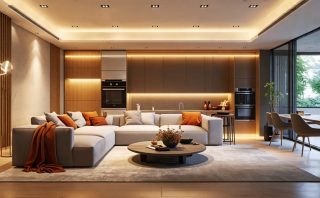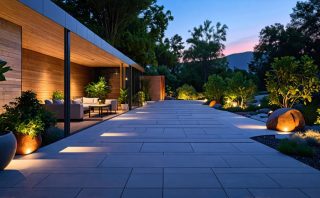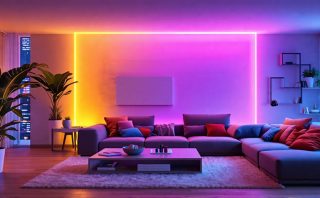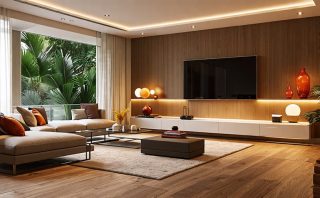Choose LED fixtures for their energy efficiency and longevity, reducing both costs and environmental impact. Incorporate dimmable systems to adapt lighting levels to your needs while conserving energy. Opt for fixtures made from recycled or sustainable materials, ensuring alignment with eco-friendly values. Prioritize smart lighting controls, such as timers and motion sensors, to minimize unnecessary electricity usage. Explore our guide on eco-friendly lighting for more insights.
Understanding Sustainable Lighting
What Makes Lighting Fixtures Sustainable?
Sustainable lighting fixtures are essential for creating eco-friendly interiors while maintaining functionality and aesthetics. Key characteristics of these fixtures include energy efficiency, sustainable materials, and extended lifespan. Energy-efficient lighting, such as LED or compact fluorescent bulbs, significantly reduces electricity consumption compared to traditional incandescent bulbs, offering both environmental and cost benefits. Using materials like recycled metal, glass, or bamboo ensures that the fixtures have a lower environmental impact, promoting resource conservation and waste reduction. Additionally, sustainable lighting fixtures are designed for longevity, meaning they require less frequent replacements, contributing to less waste over time. By choosing fixtures crafted with sustainable practices, you can enhance your space with beautiful, high-quality lighting while supporting environmental sustainability.
Benefits of Sustainable Lighting
Sustainable lighting offers numerous benefits, blending energy efficiency with aesthetic elegance. By using energy-saving technologies like LED bulbs, homeowners and businesses can reduce electricity consumption significantly, lowering utility bills and environmental impact. These lighting solutions often feature designs that complement modern interiors, enhancing the appeal of any space. Moreover, many sustainable fixtures incorporate smart technology, allowing users to control lighting remotely and further optimize energy use. Choosing sustainable lighting not only supports eco-friendly initiatives but also provides durable and long-lasting illumination, resulting in fewer replacements and waste over time. This creates a balance of environmental consciousness and practical functionality.
Types of Sustainable Lighting Fixtures
LED Fixtures
LED fixtures are the epitome of sustainable lighting, offering an efficient and environmentally conscious solution for modern spaces. Their energy efficiency is unmatched, using up to 75% less energy than traditional incandescent bulbs, which significantly reduces electricity consumption and costs for homeowners, businesses, and event planners alike. Additionally, LEDs have an impressively long lifespan, often exceeding 20,000 hours, meaning fewer replacements are needed, thus minimizing waste. This durability makes LED fixtures ideal for both residential and commercial applications, from enhancing ambiance in living rooms to providing robust solutions in high-demand commercial settings. Unlike conventional lighting options, LEDs do not contain hazardous materials like mercury, aligning perfectly with eco-friendly design goals. Moreover, their versatile range of colors and designs caters to the creative needs of interior designers and architects seeking functional yet stylish lighting solutions. For a deeper dive into the world of sustainable illumination, consider exploring more about LED fixtures and their transformative potential.
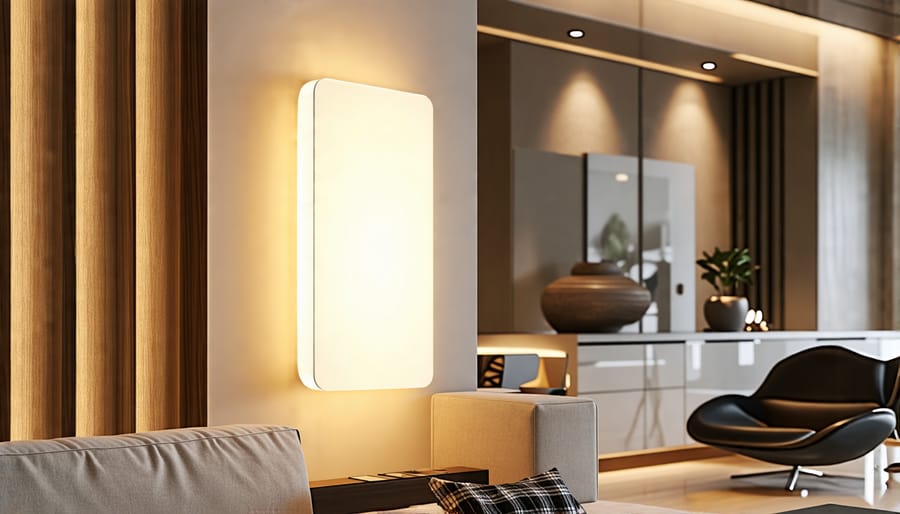
Solar Powered Lights
Solar-powered lights offer an innovative and eco-friendly solution for sustainable indoor lighting. By harnessing energy from the sun, these fixtures reduce reliance on traditional power sources, significantly lowering energy bills and carbon footprints. They are ideal for areas with ample natural light, such as sunrooms or spaces with skylights. Modern solar-powered designs are versatile, blending seamlessly with various interior styles, from contemporary to rustic. For those looking to integrate solar lighting, consulting with experts ensures optimal placement and efficiency, maximizing the benefits. As technology advances, solar-powered lights are becoming an increasingly viable and stylish option for sustainable interior design.
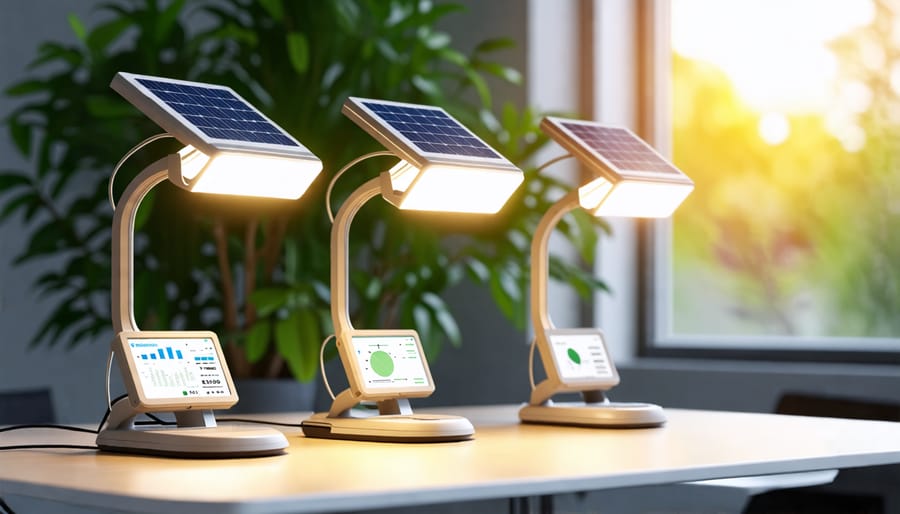
Smart Lighting Systems
Smart lighting systems are revolutionizing how we illuminate our homes and businesses, offering both convenience and sustainability. These systems utilize advanced technology such as LED bulbs, motion sensors, and smartphone integration to optimize energy consumption. By adjusting lighting levels automatically based on natural light availability or occupancy, smart systems significantly reduce energy usage and lower electricity bills.
For interior designers and architects, smart lighting offers seamless integration into modern design aesthetics, enhancing the ambiance while maintaining an eco-conscious approach. Homeowners can enjoy personalized settings that adapt to their daily routines, contributing to a sustainable lifestyle. Event planners and commercial business owners also benefit from these systems’ adaptability and the potential for significant cost savings through energy efficiency.
To explore how these innovative solutions can transform your space, read more about smart lighting systems. This technology not only underscores a commitment to environmental responsibility but also provides a sophisticated, intelligent approach to lighting that aligns perfectly with eco-friendly design principles.
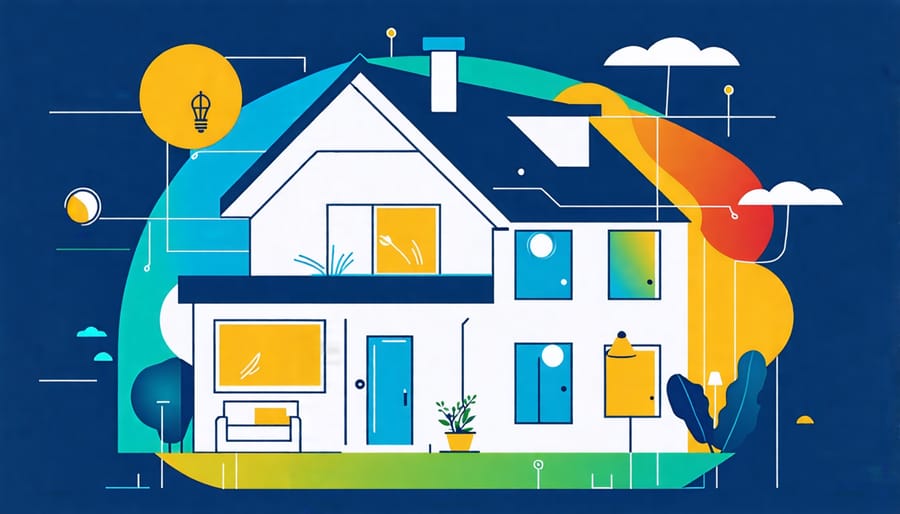
Incorporating Sustainable Lighting into Interior Design
Residential Spaces
Integrating sustainable lighting into residential spaces can transform both the ambiance and energy efficiency of your home. Begin by selecting LED bulbs, renowned for their longevity and reduced electricity consumption. Incorporate smart lighting systems that allow you to adjust brightness remotely, optimizing energy use while enhancing comfort. Consider fixtures made from sustainable materials like bamboo or recycled metals to align with eco-friendly design principles. To maximize natural light, position mirrors strategically to reflect sunlight and reduce the need for artificial lighting during the day. Layer different lighting types—ambient, task, and accent—to create versatile environments that suit various activities and moods. For personalized solutions, consult with experts who can tailor lighting plans to your specific needs, ensuring both design harmony and sustainability. By adopting these strategies, homeowners and designers can significantly reduce energy consumption while fostering a warm and inviting atmosphere.
Commercial and Event Spaces
Integrating sustainable lighting fixtures in commercial and event spaces is both a savvy business decision and an impactful step towards environmental sustainability. For business owners and event planners, selecting energy-efficient LED fixtures can significantly reduce operational costs without compromising on the visual appeal or ambiance. Such fixtures not only last longer than traditional lighting solutions but also offer flexibility in design and application, making them ideal for a diverse range of commercial settings and dynamic events. Opt for fixtures with dimming capabilities and smart control systems that adjust according to natural light levels, enhancing both energy efficiency and guest experience. Recycled or responsibly sourced materials add a layer of eco-friendliness to the aesthetics, providing a narrative of sustainability that aligns with contemporary consumer values. By incorporating these innovative solutions, businesses can effectively highlight their commitment to sustainability while ensuring that every event space remains vibrant, efficient, and environmentally conscious.
Case Studies: Successful Implementations
Sustainable lighting solutions have proven effective in a variety of settings, showcasing their adaptability and positive impact. In residential settings, homeowners have embraced LED fixtures to reduce energy consumption while enhancing the aesthetic appeal of their spaces. One notable case involved a mid-century modern home renovation where LED track lighting was implemented to provide both ambient and task lighting. This not only decreased the home’s energy bill by 40% but also enhanced its architectural features.
In commercial environments, a prominent retail store chain has successfully transitioned to using smart lighting systems. These systems automatically adjust brightness based on natural light availability, significantly cutting down on electricity usage. The project demonstrated an impressive 35% reduction in energy costs while maintaining optimal lighting for merchandise display, greatly improving the shopping experience.
Meanwhile, an event planning company has integrated solar-powered lighting in outdoor event setups. These solutions not only ensure a lower carbon footprint but also offer reliable illumination in diverse weather conditions. For a recent open-air concert, solar LED floodlights provided ample luminosity, performing flawlessly from dusk till dawn.
These real-world applications highlight how sustainable lighting can be successfully implemented across various environments, marrying efficiency and elegance while promoting environmental responsibility.
Conclusion
In conclusion, embracing sustainable lighting as a core element of modern interior design not only enhances the aesthetic appeal of spaces but also aligns with broader environmental goals. By opting for energy-efficient lighting solutions, homeowners, designers, and businesses can significantly reduce energy consumption and carbon footprints, simultaneously benefiting from lower utility costs and improved environmental conditions. Sustainable lighting options, such as LED bulbs and smart lighting systems, offer impressive durability and versatility, making them suitable for a wide range of applications, from cozy home settings to dynamic commercial environments. Moreover, these fixtures are designed to provide optimal brightness while minimizing energy waste, thus exemplifying modern technological advances in eco-friendly design. As you explore diverse lighting solutions, consider how sustainable options can seamlessly integrate into your design vision, offering both functionality and style without compromising on ecological responsibility. By prioritizing sustainability, you not only enhance the user experience but also contribute to a healthier planet, paving the way for an innovative future in lighting design.

